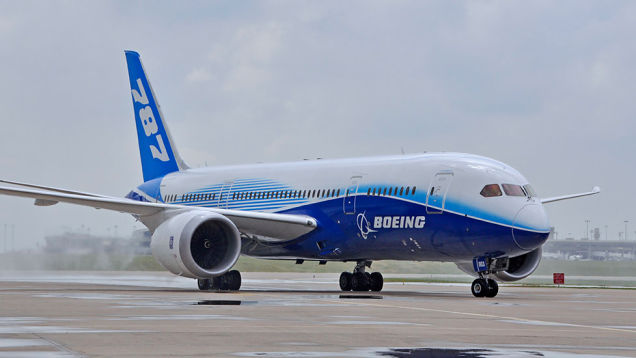If you are one of the many who suffer from flight anxiety, then you will know full well the feelings of terror leading up to an up and coming flight. The fear of flying can present itself in all sorts of forms, from sweating palms to full on anxiety attacks where your heart pounds and the floor seems to come up and meet you.
You would rather be 1,000 miles away from any form of check-in desk. However, take some reassurance with observing some of the facts about air travel and let go of the OCD – give yourself a chance and reserve judgement, you might be surprised to know that taking an airline flight is by far safer than driving to the convenience store.
When you hail that next cab, ask yourself, “how often, or how well serviced is this car?”, “what qualifications does the driver have to ensure the safety of his passengers?”, “how long has the driver had a licence?”, “when was the last time the driver had an alcoholic drink?” The facts are, you just don’t know and you take it for granted that everything is ok. But when it comes to aircraft safety, no other form of transportation is monitored or scrutinized more than that of the aviation industry.
Those who have a good knowledge of the airline industry generally feel that flying is very safe. We fear the unknown, so a good idea is to do some of your own research and study the industry, take some of the mystery away, and give yourself some reassurance.
Extensive research in the field of aviation safety has been untaken by the Massachusetts Institute of Technology. One particular study found that over a 15 year period between 1975 and 1994, the chances of an aircraft fatality was 1/7,000,000!This means that even if you flew every day of your life, the balance of probability would show that it would take 19,000 years before you experienced a fatal accident.
Interesting Aviation Safety Facts
Airlines do not teach pilots to fly
This is a common misconception. Airline pilots must have their commercial flying license before being taken on by any airline. Their rigorous training requires them to be a minimum of 21 years old, have proven excellent health, 20/20 vision, and have accrued more than 3,000 flight hours.
Engine Failure
Most Pilots enjoy their entire career without ever having to deal with an engine failure. If one engine does fail, an aircraft can arrive safely at its destination.
Airplanes Can Glide
“Cruising height” is at 35,000 feet and if all engines were to cut out the aircraft is capable of gliding for 30 minutes, or roughly 120 miles, before landing on the ground.
Engines are Expensive!
The cost of a jet engine is around $11,000,000. No airline is going to compromise their investment with fatalistic quality control.
Aircraft are regularly maintained
The typical American airplane gets a complete over-haul, every 4-5 years. Repairs and maintenance are done so rigorously that the results are an effectively brand new plane.
Back-up Plans
To ensure passenger safety, there are four systems to fall back on should one system fail. Each aircraft is fitted with a primary, an auxiliary, a back-up, and an emergency system.
Visibility
Airplanes can land in zero visibility. Pilots are trained for this and the majority of runways are fitted with and electronic slide slope, assisted by low-visibility landing equipment.
Ice is not an issue
As of 1993, warm water and glycol de-icing fluid prevents ice from forming and became standard practice to use on iced up runways. Both the aircraft and the runway are coated with this fluid.
Collision avoidance
All commercial aircraft are fitted with a Traffic and Collision Avoidance System (TCAS). This is a backup system designed to take over should communication between air traffic control and the pilot go down. TCAS monitors all surrounding aircraft traffic along the flight path. A near miss is when aircraft come within 1000 feet of each other. There is also a Ground Proximity Warning System (GPWS), which tells the pilot to pull up if he gets too close to the ground.
Storm dodging
Pilots are trained to interpret their on board weather radar and are able to make adjustments to the flight path to avoid potentially hazardous weather conditions.
Lightning strikes
Lightning may “appear” to strike an airplane while in the air, but what actually happens is the lightning harmlessly passes through the craft.
Air pockets do not exist
They are a coined phrase created by WWI journalists attempting to describe the newly invented flying machines experiences of turbulence.
Aircrafts are designed to withstand the fiercest of thunderstorms
Although they do not fly through them, as it’s actually illegal, making it a flight violation to do so. They are required to fly no closer than 20 miles from the eye of the storm.
They have enough fuel
It is a legal requirement for airplanes to have enough fuel to reach their final destination, perform a missed landing approach, travel on to an alternative landing site, remain in a hold pattern for 30 minutes, and upon landing still have 10% of fuel remaining in their tanks.
Serious about security
After 9/11 security worldwide has massively tightened up. CAT scans and sophisticated image processing software are installed in most airports within America to screen checked in baggage for explosives. Items of suspicion are scanned by a “chemical sniffer” and the results are processed to see if there is any residue of potential explosive making chemicals. The Transportation Security Administration (TSA) formed for the sole purpose of terrorist attack prevention on aircraft and in airports, and directly reports to the Department of Homeland Security.

 En
En Es
Es Fr
Fr











